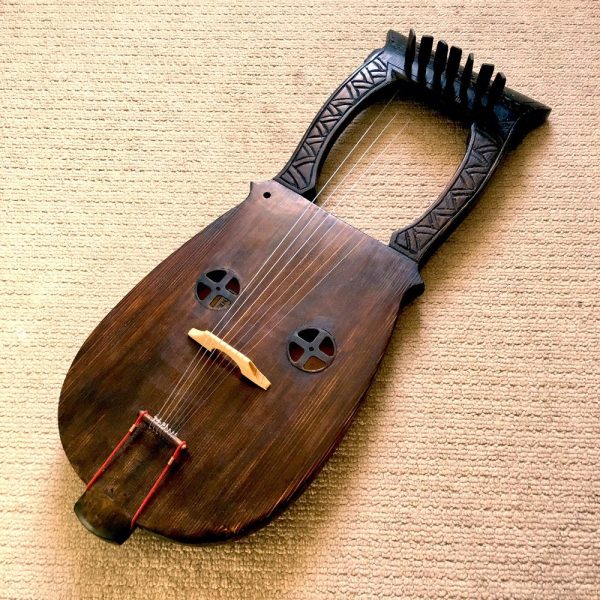Finally something interesting!
A musical instrument was discovered, in appearance it was a lyre, very similar to the Rugin folk instrument (see attached photo). On its reverse side there is a runic text carved in the younger futhark, which looks like this:
ᚦᛁᚴᛅᛦ ᛁ ᚱᛁᚴᚾᛋ ᚦᛅᚴᚢ
ᚦᛅᚢᛏᛅ ᛁᛋᛅᛦ ᛋᚴᛅᚢᛏᛁ
ᛋᚴᛅᛒᛋ ᛒᛚᚬᚦᛋᚾᛅᚴᛅ ᛒᚬᚦᚬᚱᚦ
ᛒᛁᚱᛅ ᚼᛅᚱᛘᛁᚾ ᚢᛁᚱᛅ
ᚱᛆᛁᚦᛋᛏᚬᚱᛘᛦ ᛒᚱᛆᚾᛁᛦ ᛒᚱᛁᛘᛅ
ᛒᚱᛆᛁᚦᛁᛦ ᚼᛅᚾ ᚭ ᛚᛆᛁᚦᛁ
ᛋᛅᛚ ᛁᛦ ᚴᛆᛁᛋᛚᛅᛋᚬᛚᛅᛦ
ᛋᛆᚾᛏᛁᚾᚴ ᚦᚢ ᛘᚢᚾᛏ ᛒᛆᚾᛏᛅ
In normalized Romance orthography:
þegaʀ í regns þǫ́gu
þeyta ísaʀ skeyti
skaps bloóðsnáka boðorð
bera harmin(n) vera
reiðstormʀ bręnniʀ bríma
breiðiʀ han(n) á leiði
sál eʀ geislasólaʀ
sęnding þú munt bęnda
Judging by the structure, this is what is called drottkvatt is an ancient Ruginian poetic form characterized by incredible complexity, interlocking sentences and an eerie combination of alliteration and internal rhymes. Moreover, there are so many poetic synonyms and epithets that sometimes it is completely impossible to understand what the author meant. We ourselves were only able to figure out some of them, we are waiting for an answer from specialists regarding everything else.
When there is a quarrel in the rain (=thunderstorm?)
Ice fights with rods
spirit (=courage? bravery?) of husbands,
and serpents of blood (=swords, metonymy for “warrior”) orders bring grief,
a storm of wrath (=battle) lights the fires,
takes them to their graves
(after all, the soul is the sun’s rays (????) message),
you will give a sign.
It is difficult for us to even imagine what the “sun of rays” is; even if we assume that “ray” is just another metonymy for “fire,” it doesn’t get any better.
Due to some spelling features (the use of ᛅ for a, b; ᛆ for ę and in the diphthong ᛆᛁ), with good accuracy we can assume that this is early (3-5 centuries AD) Western Proto-Ruginian. It is difficult to guess, but it is very likely that the sword we found earlier is somehow connected with this lyre and the verse on it.

